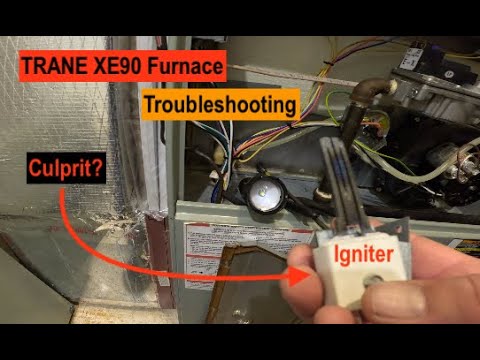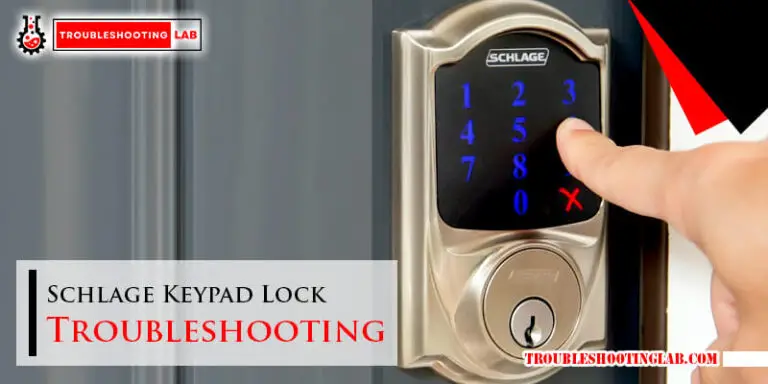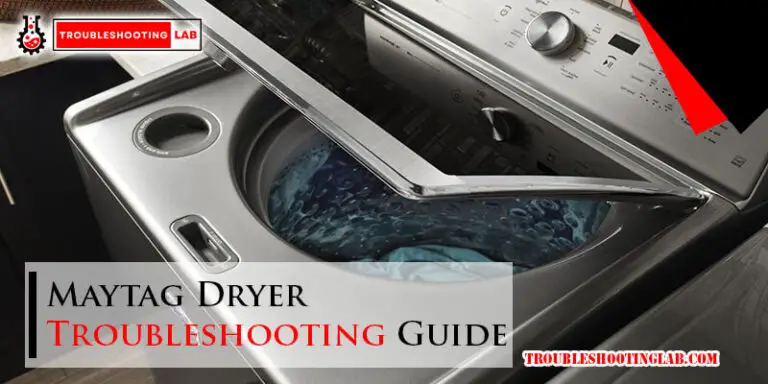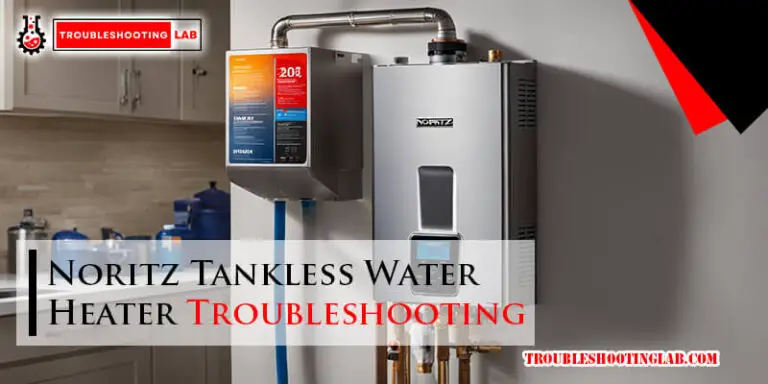Trane Furnace Troubleshooting: Quick and Effective Fixes
If your Trane furnace is not kicking on, first check the furnace switch and your home’s breaker panel to ensure they are not turned off. If the switch is on, look for the switch labeled ‘heat’ or ‘furnace’ in your home’s main electrical panel.
Gas furnace troubleshooting steps include checking your thermostat, opening your vents, cleaning furnace filters, and ensuring the furnace is on. Ignition failure is a common problem that prevents the furnace from producing hot air. If you need assistance, there are HVAC professionals available in Austin, Texas who can help troubleshoot and repair your Trane furnace.
Remember to follow safety precautions and seek professional help if needed.

Common Trane Furnace Issues
Having issues with your Trane furnace? Don’t worry, you’re not alone. Trane furnaces are known for their reliability, but like any other appliance, they can experience problems from time to time. Understanding common Trane furnace issues can help you troubleshoot and resolve them quickly. In this section, we’ll discuss some of the most common problems homeowners encounter when it comes to their Trane furnaces.
No Heat
One of the most frustrating problems you can encounter with your Trane furnace is when it’s not producing any heat. This can leave you feeling cold and uncomfortable in your own home. Here are a few possible causes and troubleshooting steps you can take to solve this issue:
- Check the furnace switch and your home’s breaker panel: Start by checking the general power switch on your furnace. Make sure no one in your home accidentally turned it off. If the switch is still on, locate your home’s main electrical panel and look for the switch labeled ‘heat’ or ‘furnace.’
- Inspect the air filter: A clogged or dirty air filter can restrict airflow and prevent your furnace from producing heat. Remove the filter and clean or replace it if necessary.
- Check the thermostat: Make sure the thermostat is set to the desired temperature and in the heating mode. If the thermostat runs on batteries, check if they need to be replaced.
- Verify the gas supply: Ensure that the gas supply to your furnace is turned on. If you’re unsure, contact your gas provider for assistance.
- Inspect the pilot light or igniter: If your furnace has a pilot light, make sure it’s lit. For furnaces with an electronic ignition system, check if the igniter is functioning properly.
- Consult a professional: If you’ve gone through these steps and your Trane furnace still isn’t producing heat, it’s best to contact a professional HVAC technician for further diagnosis and repair.
Error Codes
Trane furnaces are equipped with error codes that can help diagnose specific problems. If your furnace displays an error code on the control panel, it’s important to take note of it as it can provide valuable information to troubleshoot the issue. Here are some common Trane furnace error codes and their possible causes:
| Error Code | Description | Possible Cause |
|---|---|---|
| E2 | Ignition failure | Faulty igniter, gas valve issue |
| E3 | Overheating | Restricted airflow, dirty filter, malfunctioning blower motor |
| E5 | Flame failure | Faulty flame sensor, gas valve problem |
| E9 | Pressure switch failure | Blocked venting system, faulty pressure switch |
If you encounter an error code on your Trane furnace, consult the owner’s manual or contact a qualified HVAC technician to help you identify and resolve the problem.
Diy Troubleshooting And Fixes
When your Trane furnace is not functioning properly, it can be frustrating and uncomfortable. However, before calling a professional, there are a few troubleshooting steps you can take to try and resolve the issue yourself. In this guide, we will walk through the common problems that might occur with your Trane furnace and provide step-by-step instructions on how to fix them.
Shut Off Power To Furnace
The first step in any DIY troubleshooting is to shut off the power to your furnace. This ensures your safety while working on the unit. To do this, locate the general power switch on your furnace and turn it off. Make sure to also check your home’s breaker panel and look for the switch labeled ‘heat’ or ‘furnace.’
Diagnosing The Problem
Once you have turned off the power, it’s time to diagnose the problem. Start by checking the basics, such as ensuring that the thermostat is set to heat and the temperature is set higher than the current room temperature. Additionally, check if the air filter is dirty, as a clogged filter can restrict airflow and prevent the furnace from igniting.
If those simple checks don’t solve the issue, there might be a problem with specific components of your furnace. Check the status light indicator on your furnace for error codes or any flashing lights. This can help you identify the exact issue and provide guidance on how to fix it.
Replacing Igniter
If you suspect that the igniter is the problem, it may need to be replaced. To do this, first, locate the igniter inside your furnace. Carefully remove it by disconnecting the igniter leads. Once removed, test the new igniter for continuity using a multimeter. If it has continuity, you can install the new igniter by connecting the igniter leads back into place.
In some cases, the igniter may require cleaning rather than replacement. If this is the case, gently clean the igniter using a soft brush or cloth to remove any dirt or debris.
After replacing or cleaning the igniter, you can test the furnace by turning on the thermostat and setting the desired temperature. Observe whether the furnace ignites and produces heat as expected.
Understanding Furnace Components
Discover everything you need to know about understanding furnace components, specifically focusing on Trane furnace troubleshooting. Learn how to identify and address common issues with your Trane furnace, ensuring optimal performance and warmth for your home.
Hot Surface Igniter
The hot surface igniter is a crucial component of your Trane furnace. It is responsible for igniting the gas and starting the combustion process. This igniter is made of a high-resistance material that heats up when an electric current passes through it, providing the necessary heat for ignition. Over time, the hot surface igniter may become worn out or damaged, resulting in ignition failure. If your furnace is not lighting, the hot surface igniter should be one of the first components to check.
Flame Sensor
The flame sensor plays a vital role in ensuring the safety and efficiency of your Trane furnace. Its main job is to detect the presence of a flame once the gas is ignited. If there is no flame detected, the flame sensor sends a signal to the control board to shut off the gas supply, preventing a buildup of dangerous gases. However, a malfunctioning flame sensor can cause the furnace to shut down prematurely, leading to heating issues. Regular cleaning and maintenance of the flame sensor is essential to ensure its proper functioning.
Exhaust Fan
The exhaust fan, also known as the draft inducer fan, is responsible for extracting the combustion gases and venting them outside your home. It creates a negative pressure within the furnace, allowing for proper ventilation and preventing the gases from circulating indoors. If the exhaust fan fails to operate, it can lead to issues such as improper combustion, poor air circulation, and even safety hazards. Regular inspection and cleaning of the exhaust fan can help prevent any blockages or malfunctions that could impact the overall performance of your Trane furnace.
Repairing And Replacing Furnace Parts
When your Trane furnace is experiencing issues, it’s important to troubleshoot and repair or replace the faulty parts. In this section, we will guide you through the process of checking the motor capacitor, replacing the blower motor, and reinstalling the wiring to the control board. By following these steps, you can ensure that your Trane furnace operates efficiently and effectively.
Checking Motor Capacitor
The motor capacitor plays a crucial role in the overall functioning of your Trane furnace. If the motor capacitor is faulty, it can lead to various issues such as reduced airflow, frequent cycling, or even complete system failure. To check the motor capacitor, follow these steps:
- Turn off the power supply to the furnace to ensure your safety.
- Locate the motor capacitor, usually found near the blower motor or control board.
- Inspect the capacitor for any signs of physical damage or bulging.
- Using a multimeter, check the capacitance value of the capacitor. It should match the manufacturer’s specifications.
- If the capacitor is faulty, replace it with a new one that matches the voltage and capacitance requirements of your Trane furnace.
Replacing Blower Motor
The blower motor is responsible for circulating air throughout your Trane furnace. If the blower motor is malfunctioning, it can result in poor airflow or no airflow at all. To replace the blower motor, follow these steps:
- Turn off the power supply to the furnace.
- Disconnect the power and control wiring from the blower motor.
- Remove the mounting screws or bolts that secure the blower motor in place.
- Carefully remove the blower motor from its housing.
- Install the new blower motor, ensuring it fits securely in the housing.
- Reconnect the power and control wiring to the new blower motor.
Reinstalling Wiring To Control Board
The control board is the central hub that coordinates the operation of various components in your Trane furnace. If the wiring to the control board is loose or disconnected, it can result in erratic operation or system failure. To reinstall the wiring to the control board, follow these steps:
- Turn off the power supply to the furnace.
- Locate the control board, usually found in the blower compartment or near the furnace controls.
- Inspect the wiring for any loose connections or disconnected wires.
- Reconnect any loose or disconnected wires to their respective terminals on the control board.
- Ensure all connections are secure and tightened.
- Turn on the power supply to the furnace and test the system to ensure proper operation.
Additional Tips And Resources
For additional tips and resources on Trane furnace troubleshooting, be sure to check out online videos and tutorials that provide step-by-step instructions for diagnosing and repairing common issues. These resources can help you identify problems related to igniter failure, power supply, and other components, allowing you to save money on professional repairs.
Resetting Trane Furnace
If your Trane furnace is not functioning properly, performing a reset may help resolve the issue. Here’s how you can reset your Trane furnace:
1. Turn off the power: Locate the power switch on your furnace and switch it off. This will ensure your safety during the reset process.
2. Wait for a few minutes: Give your furnace a few minutes to cool down before proceeding with the reset. This will prevent any potential risks.
3. Turn on the power: After waiting for a few minutes, switch on the power for your furnace. You can do this by flipping the power switch back on.
4. Press the reset button: Look for the reset button on your Trane furnace. It is typically located near the combustion chamber or ignition module. Press and hold the reset button for around 30 seconds.
5. Release the reset button: After holding the reset button for the specified time, release it. This will initiate the reset process for your furnace.
6. Wait for the furnace to start: Your Trane furnace should now start up and begin the heating process. Give it a few minutes to ensure it is functioning correctly.
If the reset process does not solve the problem with your Trane furnace, it may be necessary to consult a professional HVAC technician for further troubleshooting and repair.
Troubleshooting With Trane Hvac
Trane HVAC systems are designed to provide reliable heating and cooling solutions. However, if you encounter any issues with your Trane HVAC system, you can troubleshoot the problem using the following steps:
1. Check the thermostat: Ensure that the thermostat is set to the desired temperature and mode. Make sure the batteries are not dead and replace them if necessary.
2. Inspect the air filter: A dirty or clogged air filter can restrict airflow and cause issues with your Trane HVAC system. Check the air filter and clean or replace it if needed.
3. Verify the power supply: Make sure your Trane HVAC system is receiving power. Check the circuit breaker or fuse box to ensure the power is not disrupted.
4. Examine the outdoor unit: If your Trane HVAC system has an outdoor unit, inspect it for any obstructions or debris that may be blocking airflow. Clear away any debris and ensure proper ventilation.
5. Contact Trane support: If you have followed the above troubleshooting steps and are still experiencing issues with your Trane HVAC system, it may be beneficial to contact Trane support for further assistance.
Common Heating Problems And Solutions
Heating problems can arise in Trane furnaces due to various reasons. Here are some common issues you may encounter and their possible solutions:
1. No heat: If your Trane furnace is not producing heat, check the thermostat settings, and make sure the furnace switch is on. If the issue persists, it might be due to a faulty thermostat, gas supply, or ignition system. Consult a professional HVAC technician to diagnose and fix the issue.
2. Insufficient heat: If your Trane furnace is not providing enough heat, check the air filters and clean or replace them if necessary. Additionally, make sure the vents are not blocked and the ductwork is properly sealed. If the problem continues, it could be a sign of a malfunctioning blower motor or faulty heat exchanger. Seek professional assistance for proper diagnosis and repair.
3. Uneven heating: If certain areas of your home are not receiving adequate heat, it could be due to improper airflow or ductwork issues. Ensure that all vents are fully open and unobstructed. If the problem persists, it might be necessary to have a professional inspect and potentially repair or modify the ductwork.
By following these troubleshooting tips and utilizing the resources provided by Trane, you can address common issues with your Trane furnace and ensure optimal heating performance in your home. Remember, for more complex issues, it’s always recommended to seek professional help from trained HVAC technicians.
Frequently Asked Questions For Trane Furnace Troubleshooting
Why Is My Trane Furnace Not Kicking On?
Check your furnace switch and your home’s breaker panel. Make sure the furnace switch is on and check if the breaker for the furnace is tripped. If the switch is on and the breaker is not tripped, you may need to troubleshoot further or call a professional HVAC technician.
How Do I Reset My Trane Furnace?
To reset your Trane furnace: 1. Shut off power to the furnace. 2. Troubleshoot the issue. 3. Diagnose the problem. 4. Replace or clean the igniter. 5. Test the furnace and turn on the thermostat. For more detailed instructions, refer to Trane’s troubleshooting resources or watch YouTube videos on how to reset a Trane furnace.
What Does A Red Blinking Light On A Trane Furnace Mean?
A red blinking light on a Trane furnace indicates a problem. It could be a sign of a faulty ignition system or another issue causing the furnace to not produce hot air. Troubleshooting steps should be taken to identify and resolve the problem.
What Is A Common Failure For A Furnace?
A common failure for a furnace is ignition failure, which means the furnace cannot produce hot air due to a damaged ignition system. Check your thermostat, vents, and furnace filters, and make sure the furnace is turned on.
Why Is My Trane Furnace Not Kicking On?
Check the furnace switch and your home’s breaker panel. Make sure the power switch on your furnace is on and check the breaker panel for any flipped switches labeled ‘heat’ or ‘furnace’.
Conclusion
In order to troubleshoot your Trane furnace effectively, it is important to follow a step-by-step process. Start by checking the power switch on the furnace and your home’s breaker panel. If the switch is still on, then move on to cleaning the furnace filters and ensuring that the vents are open.
Additionally, schedule an appointment with a qualified HVAC professional to diagnose and fix any issues with your Trane furnace. By following these troubleshooting steps, you can ensure that your furnace is working properly and efficiently.






